Truth about Alderney’s ‘mini-Auschwitz’: Report uncovers what REALLY happened when more than 1,000 people died during Nazi occupation of Channel island
More than a thousand people died during the Nazi occupation of Alderney during the Second World War, but the island was no ‘mini-Auschwitz’, a new report has found.
An investigation conducted by a panel of international experts has provided a shocking insight into the exact number of prisoners and workers who died on the German-occupied Channel Island between 1941 and 1945.
The panel found that between 641 and 1,027 people, including Jews, prisoners of war and some Roma, died as a result of the abuse on the island, after previous figures suggested only 389 deaths.
But while workers were subjected to appalling conditions and executions, the site did not constitute a “mini-Auschwitz,” the report said.
The review was commissioned last year by Lord Eric Pickles, the UK’s special envoy for post-Holocaust issues, with the aim of dispelling conspiracy theories and misinformation about the island.
More than 1,000 people died during the Nazi occupation of the islands during World War II. Pictured: German officers pose outside Lloyds Bank in St Annes, Alderney
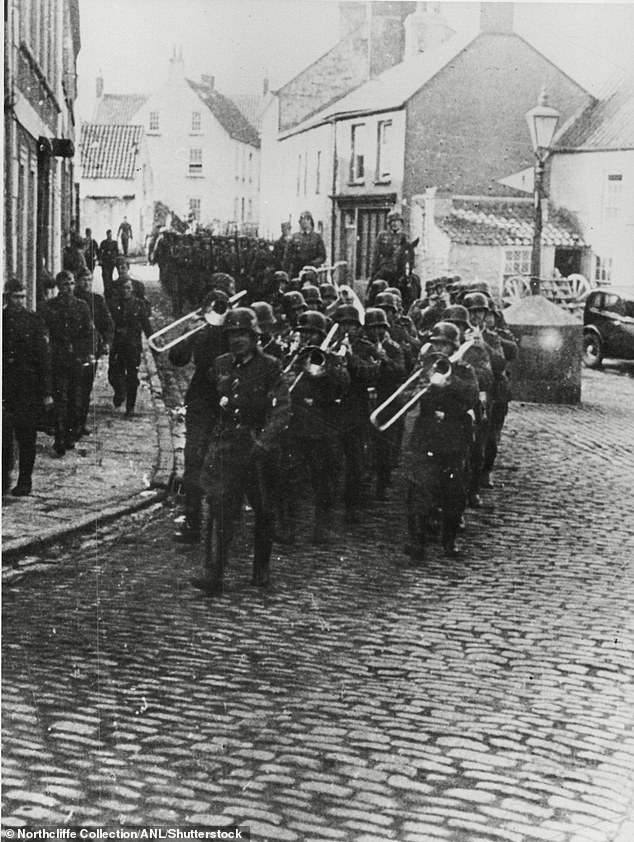
Captives consisting of Jews, POWs and some Roma, who were transported to Alderney to build fortifications as part of the German war effort. Pictured: German troops march down the main street of Alderney during the occupation
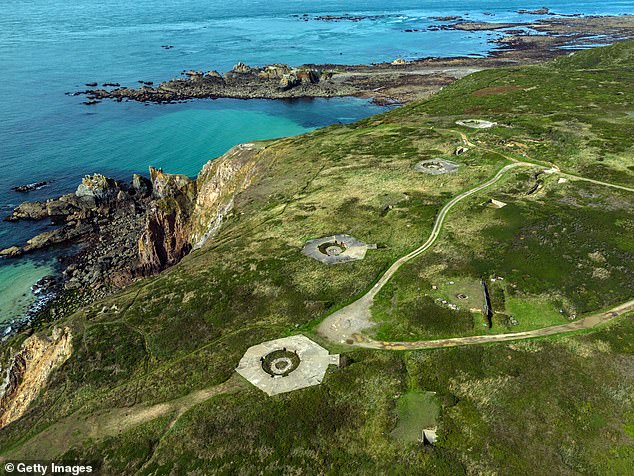
The remains of Battery Annes on Alderney, previously an open naval gun battery that was part of Hitler’s defense of the Atlantic Wall against Allied invasion
The Alderney Expert Review Panel calculated that the minimum number of prisoners or workers sent to Alderney during the German occupation was between 7,608 and 7,812 people.
Workers were transported there from countries across Europe to build fortifications as part of the German war effort.
They were housed in camps that closely resembled those in mainland Europe – and the workers were subjected to appalling living and working conditions and executions.
The investigation was launched to debunk conspiracy theories and provide the most accurate figure of those who died on the island.
The report also aims to bring justice for those who died, and ensure that this period in history, and the Holocaust, is ‘fully and accurately remembered’.
Chief Rabbi Sir Ephraim Mirvis said: ‘The findings of the review are an important and welcome development. It is vital that there is an authoritative account of this moving element in the island’s history.
‘It allows us to accurately remember the individuals who suffered and died so tragically on British soil. Flagging the relevant sites now is an appropriate step to ensure this information is widely available.”
The panel also examined why German perpetrators were not tried by Britain for war crimes committed in Alderney and concluded that an investigation carried out in Alderney immediately after the war was ‘completely serious in scope’.
But because most of the victims were Soviet citizens, the case was turned over to the Russians. And in return, Germans who murdered British soldiers at Stalag Luft III during the ‘Great Escape’ were handed over to Britain.
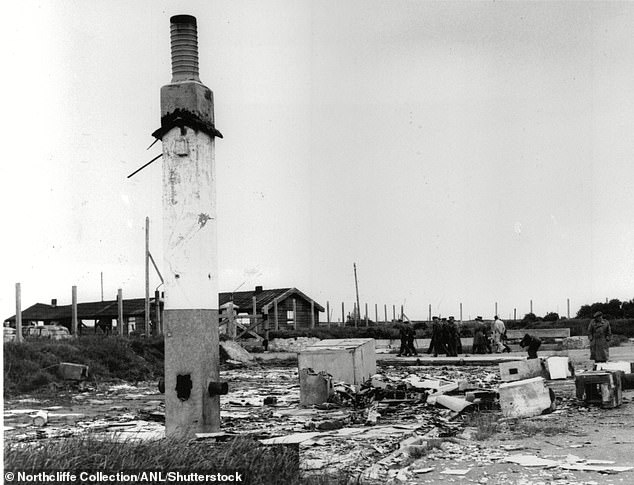
The broken remains of the Sylt concentration camp on Alderney, destroyed by the fleeing Nazis in 1945
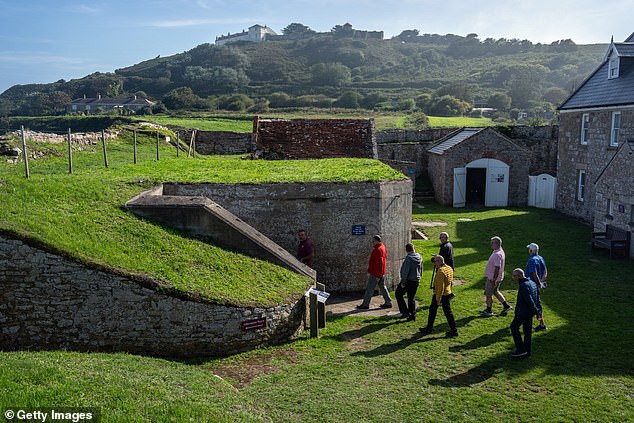
People visit a German bunker on Alderney Island, Guernsey, where thousands of workers died during the Second World War
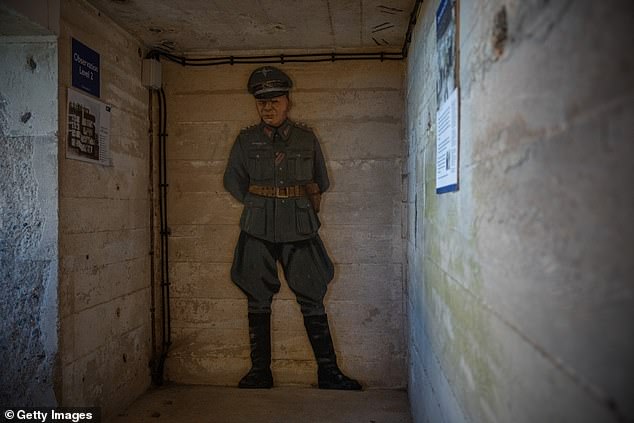
A model of a German officer is on display at The Odeon, a 15-metre-high concrete naval rangefinder tower built by forced laborers on Alderney

A plaque on the island of Alderney reads: ‘In memory of all foreign workers who died in Alderney between 1940 and 1945. They served too.”
The report says the Soviet Union failed to act on the Alderney case and was thus responsible for the failure to bring the perpetrators to justice, which caused much anger among members of the British government.
A spokesperson for the States of Alderney today welcomed the work to deliver the most accurate information possible, based on comprehensive evidence and rigorous analysis.
‘Although the events that took place in Alderney cannot be compared in scale to other parts of Europe, it is a poignant part of the island’s history that the community continues to remember and commemorate. In fact, today’s publication comes just a few days after the island’s annual service at the special monument. ‘
The President of the States of Alderney, William Tate, said: ‘On behalf of the States of Alderney and our community, I would like to express my deep gratitude to Lord Pickles and the Review Panel for their dedication in resolving an important issue that has been the subject of many years. of much discussion.
‘The overview makes it clear under what terrible conditions the people who were brought to the island had to endure and how cheap their lives were for the occupying forces.
‘The brave islanders who returned home in 1945, after being evacuated in 1940, saw first-hand the devastation wrought on their island home.
“As a community, we will never forget the suffering that these poor souls endured and the tragic loss of life, as a result of the callous and inhumane behavior of the occupying forces.”
Dr. Carr, associate professor of archeology at the Cambridge Institute of Continuing Education, and fellow of St Catharine’s College, who coordinated the panel, said: ‘I am proud of the way the team of experts came together to provide answers to the questions posed. by Lord Pickles.
“It shows what can be achieved when you bring together the right people with the right experience and expertise, committed to the memory of those who suffered in Alderney during the occupation.”
